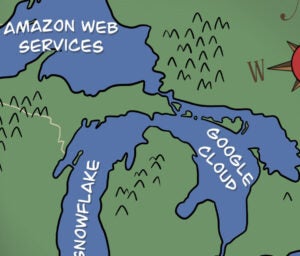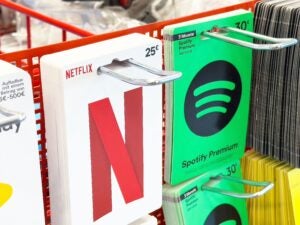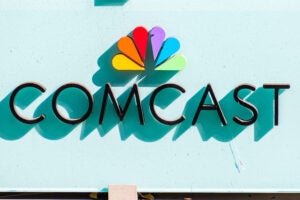 Twitter and Square have more in common than Jack Dorsey as CEO – both platforms have a marked interest in small and medium-sized businesses.
Twitter and Square have more in common than Jack Dorsey as CEO – both platforms have a marked interest in small and medium-sized businesses.
While Twitter maintains a suite of Promoted Products aimed at small business owners, including Quick Promote, a tool that allows brands to amplify tweets directly from the Twitter analytics dashboard, Square’s entire DNA is centered around the SMB.
Square was started by Dorsey in 2009 as a mobile payments software and hardware company to allow small businesses to accept credit card payments. It has since added a bundle of other SMB-focused services to its product offering, like instant deposits, protection for disputed purchases and a lending program called Square Capital.
It’s also on the rumored road toward an imminent IPO and processed more than $30 billion worth of payments last year, according to The New York Times. That’s a lot of credit card swipes – credit card swipes that represent a trove of purchase data.
Which is why a strategic partnership between Square and Twitter, however speculative at this point, would make perfect sense, said Matt Fusco, VP of business development at mobile attribution tracking company Barometric, a division of AdTheorent.
Credit Where Credit Is Due
The watchword is attribution.
“With Twitter, you have promotion and advertising, and with Square you have payment – two things that by nature go hand in hand,” Fusco said. “If the payment solution could provide analytics to the business owner, that information could be fed back in to help the business run smarter promotions.”
In other words, Square could help close the loop for Twitter, proving the efficacy of Twitter as an advertising channel. A user sees a targeted ad on Twitter, that user makes an in-store purchase and the loop is closed via tracking pixel.
“It could be one of the few partnerships where [Twitter] could attribute product-level purchases to an ad or social post in real time,” said Mike Schneider, VP of marketing at location data company Skyhook Wireless. “You could create a control group and see what product purchases are like at merchants by location and then do geotargeted ads or content and determine if they move the needle.”
The data is certainly rich enough – on both sides, said Will McInnes, CMO of social media analytics provider Brandwatch.
AdExchanger Daily
Get our editors’ roundup delivered to your inbox every weekday.
Daily Roundup
“If we think about a strategic partnership that blended location, shopping basket and footfall data that can be gained and inferred from Square, and blended that with the human overlay of topics, networks, advocacy and influence from Twitter – wow,” said McInnes. “That would be an extremely interesting social intelligence retail play.”
And why not something like Twitter Pay while we’re at it? Twitter is clearly open to commerce, as evidenced by the recent launch of its buy button. Users who engage with a buy button [click here for an example] are encouraged to enter their credit card information right there in the tweet, after which it’s stored for future frictionless payments.
Combining Square’s purchase data with interest-level data on Twitter presents the opportunity to target shoppable tweets to users based off of things they’ve bought in the physical world.
“I could see an opportunity for something like that to power the buy button for logged-in Twitter users in order to streamline the payment process,” said Frost Prioleau, CEO and co-founder of demand-side platform Simpli.fi.
Square Deal
But dialing it back a bit, SMBs are under a lot of pressure. There’s customer acquisition, churn, finding enough budget for marketing, finding enough time in the day – all of which would make an integrated advertising/marketing/payment services bundle particularly attractive.
“Even beyond Twitter and Square, the folks offering a suite of solutions to SMBs are the ones that are going to win in that space,” Prioleau said.
But SMBs aren’t a homogeneous group. They almost defy definition, said Kip Cassino, EVP of research at Borrell Associates.
“People often talk about SMBs like they’re a bunch of rocks – undifferentiated – but the fact is that these small businesses come in all shapes and sizes,” Cassino said. “With Square, we could also be talking about people who don’t even have a storefront.”
There are around 15.2 million so-called microbusinesses in the US – either sole proprietorships or businesses with just two employees – and they “spend very little on advertising, if anything,” said Cassino.
“They don’t have any marketing solutions to speak of, so a package product would be very interesting for them,” he said. “They might be willing to pay just a little bit for those services – but there are a lot of them.”
But how likely is a Square/Twitter alliance, really?
It’s easy to draw a comparison between the ousting of Dorsey from Twitter in 2008 and the power struggle that led to Steve Jobs being expelled from Apple in 1985.
For one, from the moment they were pushed out, both wanted back in.
After he got his Apple walking papers, Jobs almost immediately founded computer company NeXT along with several other former Apple employees, which produced a combination of enterprise hardware and software. In 1997, after more than a decade in the wilderness, Apple ended up buying NeXT for $427 million. With Jobs back at the Apple helm, NeXT became the foundation upon which all of Apple’s modern operating systems, including iOS, have been built.
Following Dorsey’s forced departure from Twitter – in “Hatching Twitter,” Nick Bilton’s exposé of the platform’s early years, Dorsey is described as an ineffective leader, at times vindictive and at other times inept – he went on to found Square, a company now on the brink of going public. He remained on Twitter’s board.
Dorsey reportedly engaged in a fair bit of unsavory politicking after his involuntary exit, including, according to Bilton, a whisper campaign against Twitter co-founder Evan Williams, who was appointed as Dorsey’s CEO replacement. Williams was himself replaced by Dick Costolo in 2010. Costolo stepped down in June, and now Jack’s back at the helm.
Square Peg, Round Hole?
Jobs’ triumphant return to Apple and Dorsey’s recent reappointment as CEO of Twitter were both corporate coups.
Unlike NeXT going to Apple, however, a Twitter/Square acquisition doesn’t make as much sense, said Prioleau, pointing to eBay’s spinoff of PayPal in July.
But the synergy is certainly there for a potential partnership.
“There could be many possible points of integration, but they’re probably better off as separate entities,” he said. “Payments is a very specialized business and you need to be very focused on it to make it work. Twitter and Square have a ton of data that could be helpful one to the other, but combining them would not be the best way to maximize the value of either.”
Although both companies share a similar ethos around democratization, said Brandwatch’s McInnes – Square is looking to unlock entrepreneurship through fast, easy digital payments, while Twitter’s end goal is to unlock media through its platform and disseminate news in real time – he doesn’t see a merger in the cards.
“While their purposes are the same, the spaces they play in are very different,” McInnes said. “I can definitely see the potential benefits of a strategic partnership between Square and Twitter, but both companies are way too ambitious in their own right to merge.”
That said, maybe this tweet sent from Square’s handle in early September contains a coded message:
Square is for the birds. (Via @RoostOklahoma) pic.twitter.com/T6pdBptuFp
— Square (@Square) September 3, 2015















